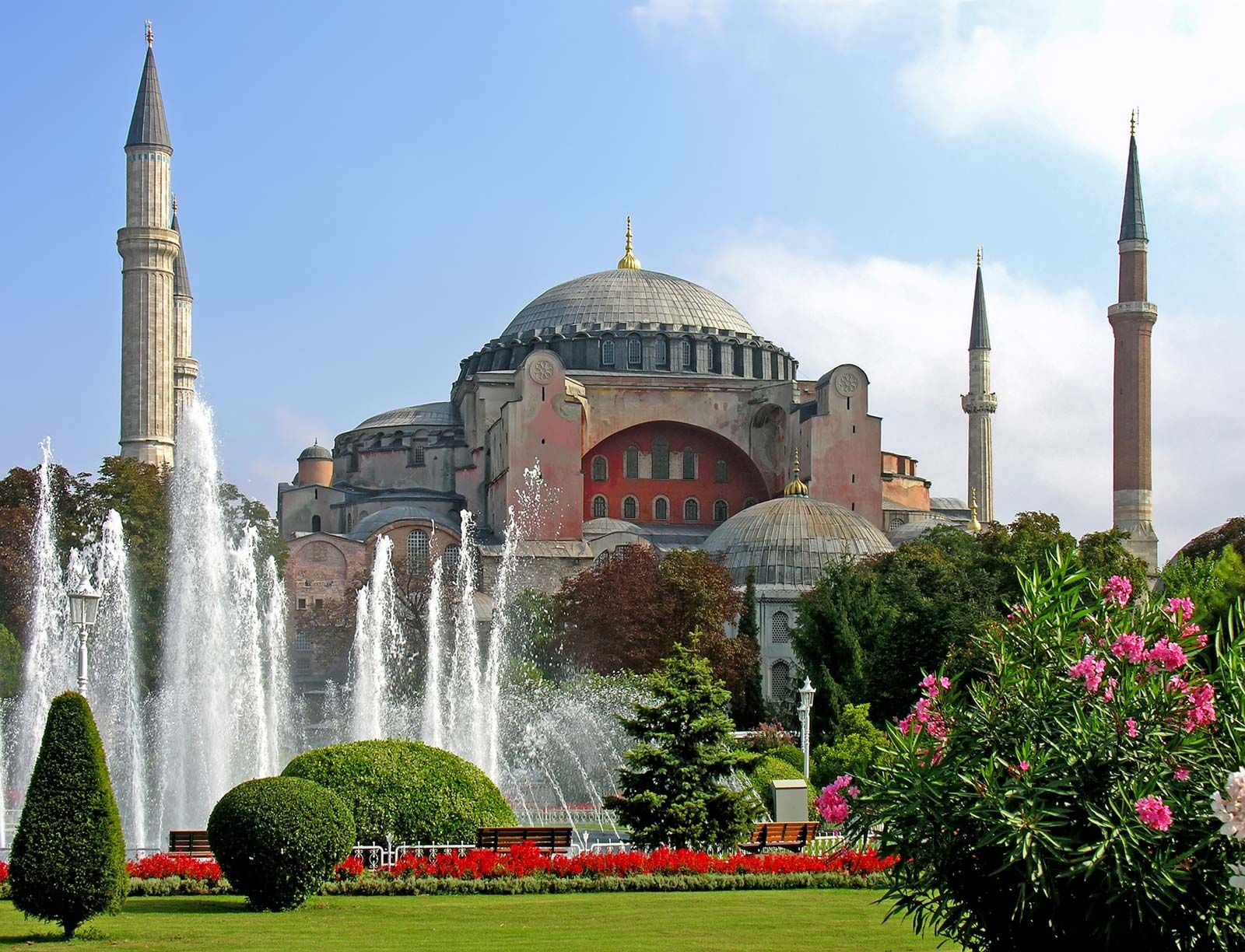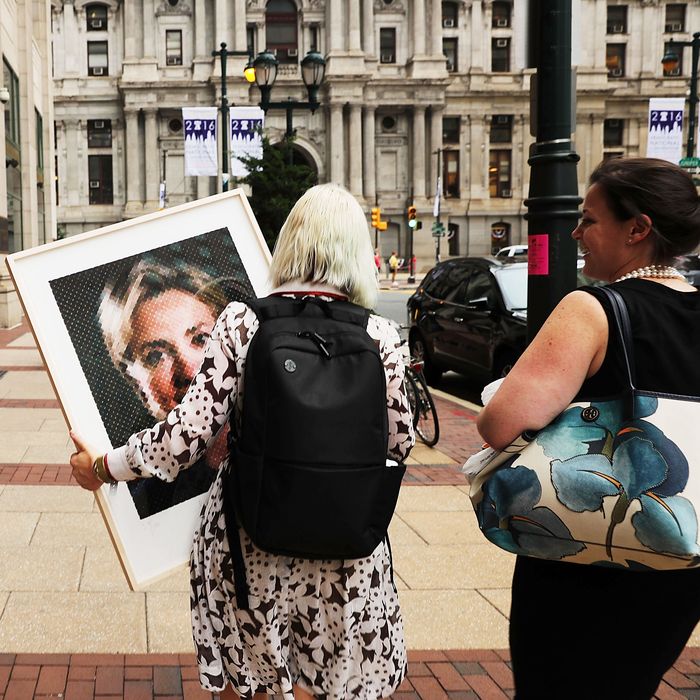Hagia Sophia: From Basilica To Mosque To Museum And Beyond

Table of Contents
The Hagia Sophia as a Byzantine Basilica (537-1453)
Construction and Architectural Wonders
The Hagia Sophia's construction, commissioned by Emperor Justinian I in the 6th century, stands as a testament to Byzantine engineering prowess. Architects Anthemius of Tralles and Isidore of Miletus employed innovative techniques to create a structure of unparalleled scale and beauty.
- Imperial Commission: Justinian I, aiming to surpass all previous structures, dedicated significant resources to the project, reflecting the immense power and wealth of the Byzantine Empire.
- Dome's Unique Construction: The massive dome, a feat of engineering for its time, was supported by pendentives, ingenious architectural features that allowed for a seemingly weightless structure. Its grandeur symbolized Byzantine dominance.
- Luxurious Materials: The basilica's interior was lavishly adorned with materials like marble, mosaics, and gold, creating an atmosphere of divine splendor. These materials were sourced from across the vast Byzantine empire.
- Symbol of Byzantine Power: The sheer size and grandeur of the Hagia Sophia served as a powerful symbol of Byzantine imperial might and its influence throughout the Mediterranean.
Religious and Cultural Significance in the Byzantine Empire
The Hagia Sophia served as the heart of the Eastern Orthodox Church for nearly a thousand years. Its significance transcended mere architecture; it was the center of Byzantine religious and cultural life.
- Center of the Eastern Orthodox Church: Imperial ceremonies, religious services, and significant religious events took place within its walls, solidifying its position as a primary religious center.
- Religious Icons and Ceremonies: Intricate mosaics and religious icons, many of which have survived to this day, adorned the interior, illustrating biblical scenes and celebrating Byzantine emperors.
- Notable Events and Figures: The Hagia Sophia witnessed coronations, religious councils, and numerous historical events that shaped Byzantine history. Emperors, patriarchs, and important figures associated with the Byzantine empire frequented the building.
- Daily Life for Byzantines: Beyond grand ceremonies, the Hagia Sophia played a crucial role in the daily lives of Byzantine citizens, serving as a place of prayer, reflection, and community gathering.
The Hagia Sophia as an Ottoman Mosque (1453-1931)
The Ottoman Conquest and Conversion
The Ottoman conquest of Constantinople in 1453 marked a pivotal moment in the Hagia Sophia's history. Sultan Mehmed II, the conqueror, transformed the basilica into a mosque, reflecting the shift in power and religious dominance.
- Fall of Constantinople: The city's capture and the subsequent conversion of the Hagia Sophia symbolized the decline of the Byzantine Empire and the rise of the Ottoman Empire.
- Sultan Mehmed II's Decision: Mehmed II's decision to convert the Hagia Sophia was a strategic move, both religiously and politically, affirming the Ottoman Empire's control and power.
- Adaptations for Islamic Worship: Modifications were made to suit Islamic practices. This involved adding minarets (slender towers from which the call to prayer is made), a mihrab (a niche indicating the direction of Mecca), and other features characteristic of mosques.
Islamic Art and Architecture within the Hagia Sophia
The conversion to a mosque didn't erase the Byzantine heritage; instead, it layered Islamic artistic elements onto the existing structure.
- Overlay of Islamic Elements: Ottoman artists and architects added their own aesthetic touches, creating a fascinating blend of Byzantine and Islamic styles. This included adding calligraphy and new decorative elements to already existing ones.
- Ottoman Calligraphy and Tilework: Intricate calligraphy panels and Iznik tiles, famous for their vibrant colors and patterns, enhanced the interior, showcasing the artistry of the Ottoman period.
- Restorations and Additions: Numerous restorations and additions were carried out over the centuries, reflecting the enduring importance of the Hagia Sophia within the Ottoman Empire.
- Significant Mosque in the Ottoman Empire: The Hagia Sophia served as the primary mosque in Istanbul for centuries, playing a vital role in the religious and social life of the Ottoman community.
The Hagia Sophia as a Museum (1935-2020)
Atatürk's Decision and its Global Impact
In 1935, Mustafa Kemal Atatürk, the founder of the modern Turkish Republic, transformed the Hagia Sophia into a museum, a decision that resonated globally.
- Secularization and Modernization: Atatürk's decision reflected his commitment to secularizing Turkey and creating a modern, Westernized nation.
- Preservation of Heritage: The museum designation aimed to preserve both the Byzantine and Ottoman heritage embedded within the structure, making it accessible to all.
- Global Impact: The conversion to a secular museum was seen by many as a symbol of Turkey's evolving identity and a commitment to preserving world heritage.
The Hagia Sophia as a Secular Space
As a museum, the Hagia Sophia attracted millions of visitors annually, becoming one of Turkey's leading tourist attractions.
- Tourist Attraction and Cultural Understanding: It promoted cross-cultural understanding and appreciation for both Byzantine and Ottoman art and architecture.
- Preservation Efforts and Research: Extensive conservation efforts were undertaken to maintain the structure and artifacts within. Ongoing scholarly research illuminated various aspects of the building's history.
- UNESCO World Heritage Site: Its recognition as a UNESCO World Heritage site further reinforced its global importance and the need for its preservation.
The Hagia Sophia Beyond the Museum (2020-Present)
The Re-designation as a Mosque and its Controversy
In 2020, a court ruling reversed the museum status, once again establishing the Hagia Sophia as a mosque. This decision sparked considerable international debate.
- 2020 Decision and International Reactions: The re-designation as a mosque triggered diverse responses globally, highlighting the complex interplay of religious, political, and cultural sensitivities.
- Implications for Religious Freedom and Cultural Heritage: The decision raised concerns about religious freedom and the protection of cultural heritage, especially given the building's layered history.
The Hagia Sophia Today
Today, the Hagia Sophia functions as a mosque, though its significance as a historical landmark and cultural icon remains intact.
- Current State as a Mosque: While now primarily used for Muslim prayer, the Hagia Sophia still remains a place of immense historical and architectural importance. Its status is still discussed amongst historians and in the media.
- Ongoing Debates about its Future: The future of the Hagia Sophia and its role in Turkish society and global culture continue to be the subject of ongoing discussions.
- Impact on Tourism and International Relations: The change in status has significantly impacted tourism and Turkey's relationships with other countries.
Conclusion
The Hagia Sophia's journey—from magnificent Byzantine basilica to revered Ottoman mosque to celebrated museum and back again—reflects the intricate tapestry of history and the enduring power of architectural brilliance. Its transformation highlights the complex interplay of religion, politics, and culture, shaping its identity and its global significance. While its status continues to evolve, the Hagia Sophia remains an unparalleled testament to human ingenuity and a symbol of cultural exchange. To learn more about this incredible structure and its profound history, further research into the Hagia Sophia and its multifaceted past is highly recommended.

Featured Posts
-
 Mhairi Black And The Fight Against Misogyny In Protecting Women And Girls
Apr 29, 2025
Mhairi Black And The Fight Against Misogyny In Protecting Women And Girls
Apr 29, 2025 -
 Willie Nelsons New Documentary Honors His Longtime Roadie
Apr 29, 2025
Willie Nelsons New Documentary Honors His Longtime Roadie
Apr 29, 2025 -
 Country Stars Spouse Refutes Caretaker Report Regarding Their Son
Apr 29, 2025
Country Stars Spouse Refutes Caretaker Report Regarding Their Son
Apr 29, 2025 -
 Wrong Way Crash On Minnesota North Dakota Border Claims Texas Womans Life
Apr 29, 2025
Wrong Way Crash On Minnesota North Dakota Border Claims Texas Womans Life
Apr 29, 2025 -
 How To Have A Happy Day February 20 2025
Apr 29, 2025
How To Have A Happy Day February 20 2025
Apr 29, 2025
Latest Posts
-
 A Date With Shen Yun Mesas Upcoming Performances
Apr 29, 2025
A Date With Shen Yun Mesas Upcoming Performances
Apr 29, 2025 -
 Shen Yun A Graceful Return To Mesas Stage
Apr 29, 2025
Shen Yun A Graceful Return To Mesas Stage
Apr 29, 2025 -
 Understanding Misogynys Impact On Womens And Girls Safety A Discussion With Mhairi Black
Apr 29, 2025
Understanding Misogynys Impact On Womens And Girls Safety A Discussion With Mhairi Black
Apr 29, 2025 -
 Mhairi Black And The Fight Against Misogyny In Protecting Women And Girls
Apr 29, 2025
Mhairi Black And The Fight Against Misogyny In Protecting Women And Girls
Apr 29, 2025 -
 The Complex Relationship Between Misogyny And Womens Safety Insights From Mhairi Black
Apr 29, 2025
The Complex Relationship Between Misogyny And Womens Safety Insights From Mhairi Black
Apr 29, 2025
